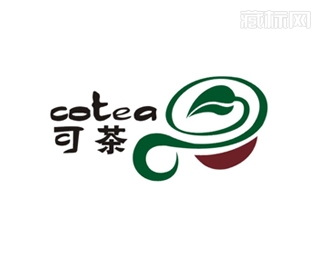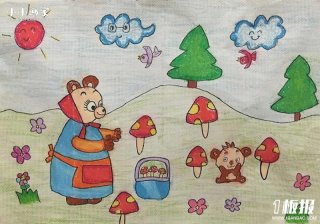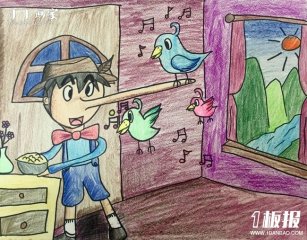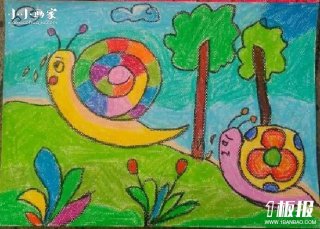愚人节英语手抄报图片大全
时间:2020-05-29 10:04 作者:mj 点击: 次
手抄报一:愚人节的由来英语
April Fool's Day is traditionally a day to play practical jokes on others, send people on fool's errands, and fool the unsuspecting. No one knows how this holiday began but it was thought to have originated in France.
传统上来讲,愚人节这一天,人们可以相互搞恶作剧,骗人跑腿,欺骗不知情的人。没人知道这个节日是怎么来的,但人们普遍认为它源自法国。
The closest point in time that can be identified as the beginning of this tradition was in 1582, in France. New Year's was celebrated on March 25 and celebrations lasted until April 1st. When New Year's Day as changed from March 25 to January 1st in the mid-1560's by King Charles IX, there were some people who still celebrated it on April 1st and those people were called April Fools.
庆祝愚人节最早是在1582年,在法国。那时,当时法国新年是在3月25日,一直持续到4月1日。16世纪60年代中期,国王查理九世把新年从3月25日变为1月1日,而还有一些人在4月1日过新年,这些人就被称作四月傻瓜了。
Pranks performed on April Fool's Day range from the simple, (such as saying, "Your shoe's untied!), to the elaborate. Setting a roommate's alarm clock back an hour is a common gag. The news media even gets involved. For instance, a British short film once shown on April Fool's Day was a fairly detailed documentary about "spaghetti farmers" and how they harvest their crop from the spaghetti trees. Whatever the prank, the trickster usually ends it by yelling to his victim, "April Fool!"
愚人节那天的恶作剧有的很简单(比如,说句“你鞋带开了!”),有的却是精心设计的。把室友的闹钟往后调一小时是常见的。甚至新闻媒体都来凑热闹。比如,在愚人节那天,曾经有一部英国短片较为详细地记录了“种意大利面的农民”,以及他们如何从意大利面树上收获意大利面。不管是什么恶作剧,搞恶作剧的人通常在最后会对被搞的人喊一句:"四月傻瓜!"
April Fool's Day is a "for-fun-only" observance. Nobody is expected to buy gifts or to take their "significant other" out to eat in a fancy restaurant. Nobody gets off work or school. It's simply a fun little holiday, but a holiday on which one must remain forever vigilant, for he may be the next April Fool!
愚人节是一个“仅为娱乐”的节日。谁也不用买礼物,也不用带着男/女朋友出去到一家豪华餐厅去吃饭。人们也不会放假。它仅仅是个搞笑的小节日,但是在这一天,每个人都要保持警醒,不然就要被人耍啦。

手抄报二:各国愚人节的风俗
Unlike most of the other nonfoolish holidays, the history of April Fool's Day, sometimes called All Fool's Day, is not totally clear. There really wasn't a "first April Fool's Day" that can be pinpointed on the calendar. Some believe it sort of evolved simultaneously in several cultures at the same time, from celebrations involving the first day of spring.
April fool:愚人节时受愚弄的人,中文多译作“四月傻瓜”。没有人能够在日历上准确地标出第一个愚人节的位置,即“没有人知道第一个愚人节是什么时候开始的。”pinpoint:精确地确定......的位置(性质、原因等),确认。有些人认为它可能是同时从几种文化演变而来的,源自与春季第一天有关的庆祝活动。sort of:(口)近似,有那么点儿。
The closest point in time that can be identified as the beginning of this tradition was in 1582, in France. Prior to (4)that year, the new year was celebrated for eight days, beginning on March 25. The celebration culminated on April 1. With the reform of the calendar under Charles IX, the Gregorian Calendar was introduced, and New Year's Day was moved to January 1(5).
查理九世在位期间进行了历法改革,引进了阳历,并且把新年第一天移至1月1日。Charlex IX:查理九世,法兰西国王[1560-1574];Gregorian Calendar:格列高利历,即目前全世界通用的阳历。
However, communications being what they were in the days when news traveled by foot, many people did not receive the news for several years(6). Others, the more obstinate crowd, refused to accept the new calendar and continued to celebrate the new year on April 1(7). These backward folk were labeled as "fools" by the general populace. They were subject to some ridicule, and were often sent on "fools errands" or were made the butt of other practical jokes(8).
然而,在那个消息还有靠徒步旅行传播的年代里,有许多人过了好几年后才得到这个消息。一帮冥顽不化的家伙却拒绝接受新历法,依旧在4月1日那天庆祝新年。他们受到嘲笑,并且经常被派去做只有笨蛋才做的差事,或者成为恶作剧的对象。butt:(嘲弄等的)对象,笑柄;practical joke:恶作剧。
This harassment evolved, over time, into a tradition of prank-playing on the first day of April(9). The tradition eventually spread to England and Scotland in the eighteenth century. It was later introduced to the American colonies of both the English and French. April Fool's Day thus developed into an international fun feast(10), so to speak, with different nationalities specializing in their own brand of humor at the expense of their friends and families.
这种折磨人的行为随着时间慢慢演变成在4月的第一天搞恶作剧的传统。
In Scotland, for example, April Fool's Day is actually celebrated for two days. The second day is devoted to pranks involving the posterior region of the body. It is called Taily Day(11). The origin of the "kick me" sign can be traced to this observance(12).
例如在苏格兰,愚人节实际上要过两天。第二天专门对人身后部位(谑指屁股)胡闹。这一天被称作Taily节,这一天专门玩跟臀部有关的恶作剧,通常做法是悄悄地在别人的臀部贴上写着“踢我”的标签,显得十分滑稽。
Mexico's counterpart of April Fool's Day is actually observed on December 28. Originally, the day was a sad remembrance of the slaughter of the innocent children by King Herod. It eventually evolved into a lighter commemoration involving pranks and trickery(13).
最初这一天是用来纪念被希律王屠杀的那些无辜的孩童,结果却演变成了一个充满恶作剧和诡计的较为轻松的纪念日。King Herod:希律王(希律大帝),罗马统治时期的犹太国王,统治后期凶恶残暴,曾下令屠戮伯利恒城男婴;commemoration:庆祝会,纪念仪式;trickery:诡计,耍花招。
Pranks performed on April Fool's Day range from the simple, (such as saying, "Your shoe's untied!), to the elaborate(14). Setting a roommate's alarm clock back an hour is a common gag(15). Whatever the prank, the trickster usually ends it by yelling to his victim, "April Fool!" (16)
无论哪种恶作剧,都会以其始作俑者朝受害者大喊:“四月傻瓜!”而宣告结束。
Practical jokes are a common practice on April Fool's Day. Sometimes, elaborate practical jokes are played on friends or relatives that last the entire day. The news media even gets involved. For instance, a British short film once shown on April Fool's Day was a fairly detailed documentary about "spaghetti farmers" and how they harvest their crop from the spaghetti trees. (17)
例如,曾在愚人节放映过一部英国短片,那是一部相当详尽的纪录片,讲述了“种面条的人”以及他们是如何从面条树上收割面条的。spaghetti:意大利式细面条。
April Fool's Day is a "for-fun-only" observance. Nobody is expected to buy gifts or to take their "significant other(18)" out to eat in a fancy restaurant. Nobody gets off work or school. It's simply a fun little holiday, but a holiday on which one must remain forever vigilant(19), for he may be the next April Fool!
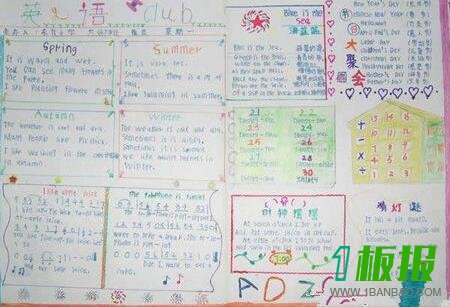
上一篇:历史手抄报图片大全
下一篇:结核病手抄报图片大全






